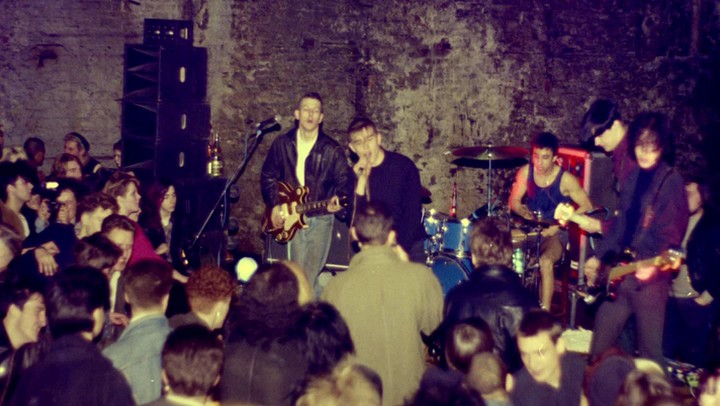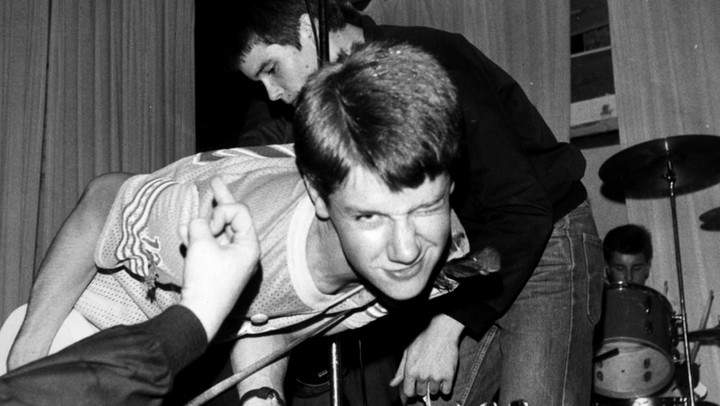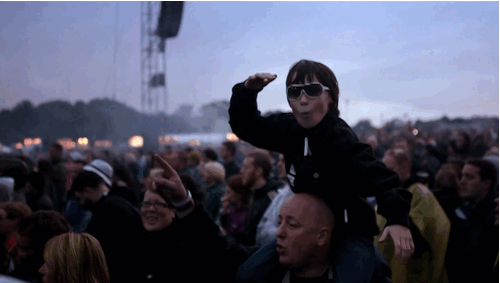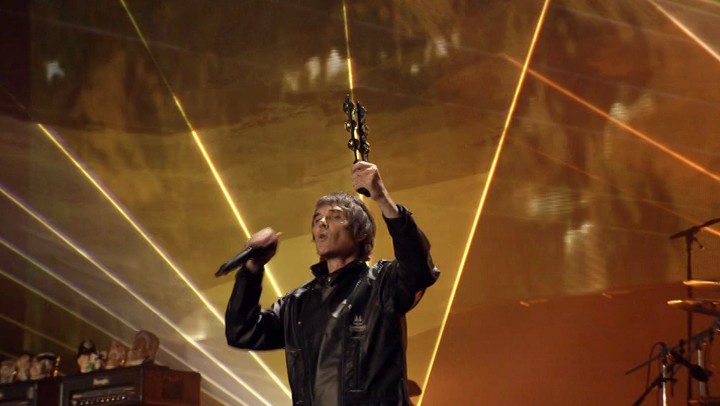Made of Stone opens with a two-and-a-half-minute shot of Stone Roses vocalist Ian Brown descending from the stage at an outdoor gig, high-fiving ecstatic fans pressed up against the barricade in front. His handsome poker face as too-cool-to-care impassive as ever, Brown doesn’t act like this is a moment of more than mild passing interest. But Shane Meadows‘ slow-motion camera is as awestruck as it would be recording Moses parting the Red Sea.
Maybe you have to be of Meadows’ approximate age and background to fully appreciate why. Hitting eighteen as a somewhat rowdy working-class youth from England’s Midlands—the setting for nearly all his subsequent films—he was exactly the type likely to be most impacted by The Stone Roses’ eponymous 1989 debut album. Its combination of anthemic rock, psychedelia, funk, soul and whatnot, at once accessibly pop and hypnotically jammy, was the music of that place and moment. Hyped to the skies, they could do no wrong, at least for a while. (Across the Atlantic, however, they never really became more than hype—perhaps in part because they abruptly canceled a 1990 U.S. tour with the statement “America doesn’t deserve us yet.”)
The band exemplified for many the “Madchester” scene of baggy-clad raver types grooving to the hedonistic vibes of Happy Mondays, Inspiral Carpets, the Charlatans and other acts who for a time seemed poised to rule the world. Certainly they themselves were certain they would: The Roses called themselves the best band in the world even before releasing that classic first album whose tracks started with “I Wanna Be Adored” and ended humbly with “I Am the Resurrection.” They provided a model for hubris (and internal conflict) that fellow Mancunians Oasis would closely follow a couple years later.
Yet by the time Oasis released its signature single “Wonderwall” in late 1995, the Stone Roses would be on the verge of breakup, and already considered ancient history by the ever-fickle British rock press. Made of Stone chronicles the very big news of their reunion fifteen years later, while recalling the spectacular climb and fall of their first go-around.
It’s a fitting subject for Meadows’ first feature documentary, as this is the music most of his narrative films’ characters would consider “classic”—the soundtrack of their youth, or their parents’ youth. A Stone Roses track would have been right at home in any Meadows film, though so far only A Room for Romeo Brass featured one, “Going Down.” (Probably the music rights were out of his budgetary league, a problem one hopes doing a whole documentary about the band would ease from now on.) A song like “Waterfall”—or “Wonderwall,” for that matter”—may show the wistful, romantic side of Britpop. Yet one look at the fans seen throughout Made of Stone, and you know the Roses’ primary audience isn’t sitting around reading Jane Austen novels when not having tea at Claridge’s during breaks from their white-collar jobs. They are former (or sometimes not-so-former) yobbos, council flat veterans who’ve been acquainted with a dole queue in their day, people for whom “Manchester” doesn’t bring to mind a place (or even the Stone Roses) so much as a team—one they might or might not be willing to bash somebody’s head in over.
They’re folk who would recognize in a flash the general milieu and specific types of all Meadows prior, fictive features. Most of which are about the rough youth he rose above without ever forgetting: The alienated working-class youths gathered into pettily destructive (and self-destructive) gangs in Small Time (1996), Twenty Four Seven (1997) and This Is England (2006); protecting or avenging fraternal bonds in Romeo Brass (1999), Dead Man’s Shoes (2004) and Somers Town (2008); even the semi-mellowed adults trying to correct past wrongs in Once Upon a Time in the Midlands (2002).
These figures range from pre-adolescent to thirty-something, from gainfully employed to homeless, their present-tense spanning from 1983 (in England, Meadows’ most explicitly autobiographical work and the only one he’s made sequels to, via successive short television series’) to Right Now. You can see any of these figures head-banging (or slow-dancing) to the Stone Roses tracks that might articulate their own inchoate yearnings. (Meadows has also made fun of his own rockstar aspirations with 2009’s little-seen but reportedly very funny Le Donk & Scor-zay-zee, an improvised comedy starring frequent acting muse Paddy Considine and featuring a more recent musical fixation, Arctic Monkeys.)
Made of Stone focuses primarily on its subjects’ reunion, seen as a triumphant affair despite a few hiccups (like a well-publicized onstage row in Amsterdam). It doesn’t try to be a definitive account of this band’s very stormy history. Their past querulousness with labels, management, press and each other is something a diehard fan like Meadows—who’s not infrequently seen onscreen, a move that might seem vain if he weren’t so obviously thrilled by proximity to his idols—can take for granted without needing to dwell on it.
After all, a certain amount of surly mook behavior is a relatable plus to the Roses’ listener base. Like Ian Brown interacting with the crowd at this documentary’s start, taking in their wild excitement while not showing the slightest emotion himself, not-giving-an-eff is intrinsic to what makes this band seem monumental—to themselves as well as to those who duly adore them.








